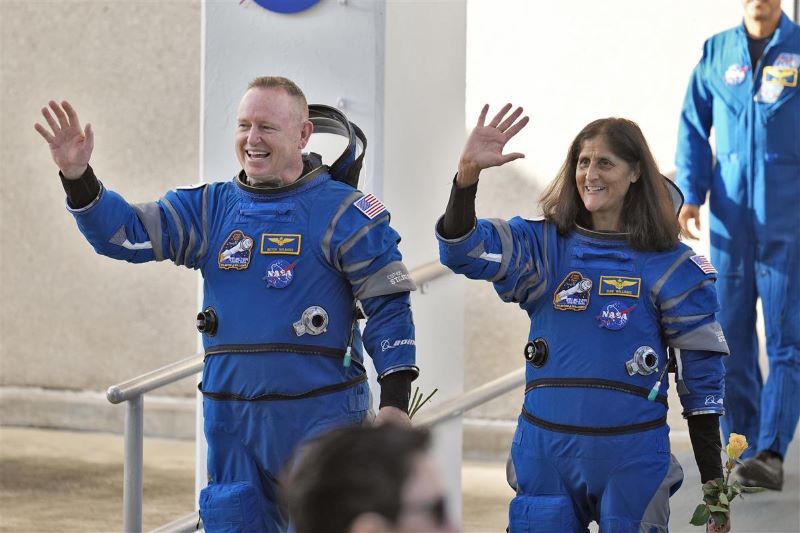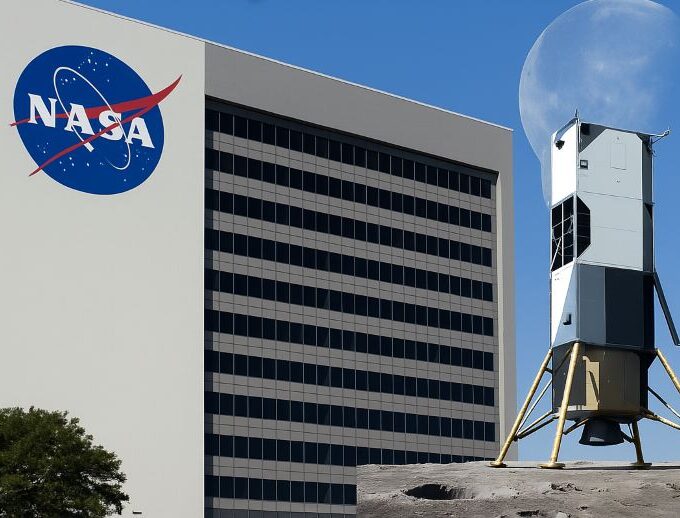A handover ceremony for command was held recently on the International Space Station, and US astronaut Sunita Williams passed this important responsibility to her Russian counterpart Alexi Ovchinin. At the time of the handover, Williams expressed deep gratitude to the control center team members around the world and her relatives and friends, and revealed that she was ready to return to Earth.
Looking back, Williams and another American astronaut Wilmore took Boeing’s Starliner on June 5 last year to carry out the first manned test flight mission and successfully arrived at the International Space Station. They were originally scheduled to return to Earth on June 14, but due to a series of problems such as thruster failure and helium leakage, the return date had to be postponed again and again. The time span of this space journey has therefore been greatly extended.
After nearly nine months of life in space, NASA has finally confirmed their return date and plans to bring the two astronauts back to Earth around March 19. During this time, Williams and Wilmore not only completed a number of scientific experiments and maintenance work on the International Space Station, but also experienced unprecedented challenges in space life.
Technical Failures Left Astronauts Stranded in Space
Looking back on the beginning and end of this mission, we have to mention the name of the Starliner. This is a new generation of manned spacecraft developed by Boeing to share SpaceX’s launch mission. The mission was originally scheduled to fly to the International Space Station on June 5, 2024 and return on June 14. However, a series of jaw-dropping technical failures and management problems not only turned this short-term mission into a long-term stay in space, but also postponed the return time of the two astronauts to the end of March 2025. This sudden change from a short-term stay to a long-term stay is not only an unexpected continuation of a scientific mission, but also a reflection on technical errors and management loopholes.
If it weren’t for hearing Williams and Wilmore’s optimistic speeches in person, many people might think this was a tragedy of being “trapped in space.” In the live video broadcast with NASA officials, the two appeared to be in good spirits and laughed that they didn’t feel “abandoned.”
What Kind of Technical Loopholes are Hidden Behind the Space Stay?
The successive failures of the spacecraft’s thrusters and helium leaks directly disrupted the plan. The return date was postponed again and again, and finally NASA decided to let the Starliner return to Earth empty, while the two astronauts were changed to return on the SpaceX spacecraft.
As a company that has long enjoyed a high reputation in the aerospace field, Boeing exposed so many problems during the test phase of the spacecraft that people can’t help but question its technical maturity and research and development rigor. The thruster failure and helium leak are obviously not small problems, but they directly led to the failure of the astronauts to return. And NASA’s failure to provide a more complete backup plan in the mission planning also makes people sigh at the shortcomings of space mission management.
What Does Being Stranded in Space Mean to Astronauts?
- Physical challenge: In a weightless environment, astronauts’ muscles and bones will atrophy, and long-term stay may cause irreversible damage to the body. In addition, although the living conditions on the International Space Station are relatively complete, resources are limited after all, especially the supply of oxygen, food and water, which need to be strictly calculated. Living in this environment for 9 months is undoubtedly a huge test of the physical limits of the two.
- Psychological pressure: Space is lonely. When the return time is postponed again and again, the pressure faced by astronauts comes not only from the mission itself, but also from missing their families and the psychological confusion caused by the uncertainty of the return plan. Staying optimistic and continuing to work efficiently in such an environment is undoubtedly an admirable persistence.
- Scientific mission pressure: Even during the detention period, astronauts still need to complete a series of scientific experimental tasks. Williams said, “We still have a lot of unfinished tasks.” Behind this statement, there is both responsibility for the mission and persistence in scientific career.
What Impact Does the Detention Incident Have on Society?
This incident is not only an internal reflection in the aerospace field, but also aroused the attention of all sectors of society. For the general public, aerospace engineering has never been a simple event. People see the high cost and high risk in aerospace missions. In an era of highly sensitive resource allocation, similar incidents may undermine people’s confidence in the aerospace industry.
The problems of the Starliner failure and the delay of the Dragon spacecraft have undoubtedly sounded the alarm for NASA and its partners. In the future, how to design spacecraft more rigorously, how to execute mission plans more efficiently, and how to provide more emergency plans in emergency situations will become important links in space missions that cannot be ignored.
In this stranded incident, Wilmore and Williams used their actions to interpret the meaning of scientific exploration. Although the return plan was repeatedly postponed, they always remained optimistic and insisted on completing various tasks. Their perseverance and hard work have become a symbol of human exploration of the universe.












